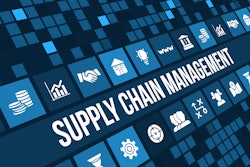
Modern warehouses and manufacturing facilities rely on sophisticated asset tracking systems to monitor everything from process reels worth tens of thousands of dollars, to automotive die sets valued in the hundreds of thousands. While the wireless technologies that tag and identify these assets get most of the attention, the infrastructure that makes these systems reliable often goes unnoticed—until it fails.
The hidden dependency
Asset tracking systems appear wireless on the surface. RFID tags, Bluetooth beacons, and infrared sensors communicate wirelessly because the assets they're attached to are constantly moving. But this wireless communication represents just the first hop in a larger infrastructure ecosystem.
Every wireless asset tag needs to communicate with base stations or receivers positioned throughout a facility. These base stations collect location data from hundreds or thousands of tagged assets and relay that information to central monitoring systems. While the tags are wireless by necessity, the base stations that receive their signals require reliable, hardwired connections to function effectively.
This is where infrastructure decisions become critical. In clinical or enterprise environments like hospitals or office buildings, standard commercial-grade cabling works adequately. But in the more demanding environments where high-value assets operate, like manufacturing floors, warehouses and processing facilities, environmental factors quickly expose the limitations of standard infrastructure.
When infrastructure becomes a liability
Consider a cable manufacturing plant where process reels move continuously through different production stages. These reels, worth tens of thousands of dollars each, need constant tracking as they progress from raw copper processing to finished cable winding. The facility might maintain 10,000 or more reels in various stages of production.
Without reliable asset tracking, plant managers develop coping strategies that mask deeper problems. They carry excess inventory, perhaps maintaining 10,000 reels when 6,000 would suffice with better tracking. They assume some reels will go missing and plan accordingly. But when asset tracking infrastructure fails due to environmental challenges, even these buffers prove inadequate.
In automotive manufacturing, the stakes are even higher. Die sets used to stamp body panels can be worth hundreds of thousands of dollars each. These massive tools—often the size of a car themselves—cycle regularly between production areas and maintenance facilities. Historically tracked using paper sheets and floor markings, these valuable assets sometimes disappear for weeks when manual tracking systems break down.
One major automotive manufacturer discovered that installing asset tracking systems wasn't enough. The harsh manufacturing environment was home to processes that use various fluids and lubricants. Some of the chemicals would become airborne, find their way into enclosures for connectivity infrastructure and attack the plastic components. Cables and connectors degraded over time, creating intermittent failures that rendered the tracking system unreliable just when accuracy mattered most.
Environmental reality check
Manufacturing and warehouse environments present challenges that commercial-grade infrastructure simply can't handle. Cutting fluids used in metalworking operations aerosolize and settle on cables and connectors. Temperature variations stress cable jackets beyond their design limits. Caustic chemicals in electroplating facilities attack standard plastic materials. Oil exposure in industrial machinery environments degrades cable performance over time.
These environmental factors don't cause immediate, catastrophic failures. Instead, they create gradual degradation that manifests as intermittent connectivity problems, missed reads, and system unreliability. Asset tracking software may show a tag in one location when the asset has already moved or fails to register when valuable equipment enters or leaves designated areas.
The business impact multiplies quickly. Operations teams waste hours hunting for assets that tracking systems claim to have located. Production schedules suffer when required tooling can't be found quickly. Inventory carrying costs balloon as facilities maintain safety stock to compensate for tracking uncertainties.
Designing for reliability
Successful asset tracking implementations require infrastructure designed for the environment where it will actually operate. In harsh industrial settings, this means cables with specialized jacket materials that resist chemical exposure, temperature extremes, and oil contamination. It means termination systems that maintain reliable connections despite environmental stresses.
The maintenance implications are particularly significant. Asset tracking base stations often mount in ceiling locations to maximize coverage area and avoid interference from ground-level operations. If wireless base stations require regular battery changes, accessing these locations becomes a major maintenance burden. Hardwired base stations eliminate this recurring maintenance while providing more consistent power for reliable operation.
Modern power-over-Ethernet systems can deliver both power and data through a single cable connection, simplifying installation while ensuring reliable operation. When properly implemented with industrial-grade components, these systems provide the stable foundation that wireless asset tracking technologies need to deliver accurate, actionable information.
The integration challenge
The most successful asset tracking implementations don't exist in isolation. They integrate with existing operational systems to provide contextual information that drives better decisions. Knowing that a process reel is in Section A becomes more valuable when that information connects to production scheduling systems that can optimize workflow based on asset availability.
This integration depends on robust network infrastructure that can handle not just basic location data, but the increased data flows that come with system interconnection. As facilities connect asset tracking systems to enterprise resource planning systems, manufacturing execution systems, and predictive maintenance platforms, the underlying network infrastructure becomes even more critical.
The goal isn't just tracking asset locations—it's enabling smarter operations through better information. When a chemical processing facility knows exactly which reaction vessels are ready for the next batch, which tools are available for maintenance, and which raw materials are positioned for optimal workflow, the entire operation runs more efficiently.
Strategic infrastructure decisions
Supply chain executives evaluating asset tracking investments need to consider the complete infrastructure picture. The wireless technologies that track assets represent just one component of a larger system that includes base stations, network connectivity, data integration platforms, and the environmental resilience to tie it all together.
The costliest failure mode isn't dramatic system breakdowns—it's gradual degradation that erodes trust in tracking data. When operators can't rely on asset location information, they revert to manual processes and safety stock that eliminate the efficiency gains asset tracking was meant to provide.
Infrastructure investments that seem expensive during procurement often prove economical over the system lifecycle. Environmental-resistant cabling that costs three times more than standard alternatives may eliminate years of troubleshooting, component replacement, and system reliability issues. Proper termination systems that ensure reliable connections from installation reduce the maintenance calls that become exponentially more expensive when base stations are mounted in difficult-to-reach locations.
The foundation of effective asset tracking isn't the sophisticated wireless technologies that capture attention—it's the infrastructure that ensures those technologies can deliver reliable information when and where operations need it most. In demanding industrial environments, that foundation requires more than standard solutions can provide.
With contributions from Pete Cox, product manager at Belden, and Dave Watson, director of automation cables at Belden.


















